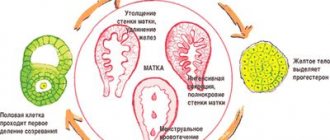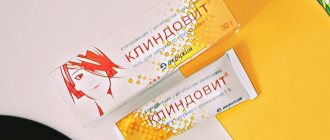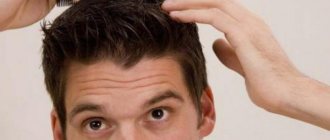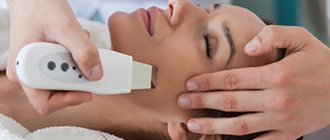Why do sweets cause acne?
Proper nutrition is a guarantee of healthy skin. It's hard to disagree with this.
Some people are deeply convinced that regular consumption of sweets is very beneficial for health. Nutritionists are skeptical about this opinion. A little sugar in food is actually good for you, but too much sugar is unhealthy.
Increased sugar levels
The brain needs glucose most of all. With a lack of sugar, thought processes slow down and mood decreases. Chocolate is a unique remedy for women's pain. However, this does not mean that it is necessary to consume sweets in unlimited quantities. Excessive consumption of carbohydrates leads to disruption of metabolic processes and the appearance of acne.
The main reasons for the formation of acne in adults after excessive consumption of sweets:
- Increased testosterone and androgen levels.
- Increased blood sugar levels.
- Activation of the process of fatty acid production.
Rashes in children occur due to sugar and various emulsifiers found in sweets. The nature of the rash is more reminiscent of an allergic reaction. The imperfection of the digestive system is a leading factor in the development of acne. Thus, eating chocolate and acne are closely related.
Allergy to sugar
An allergy to sugar occurs when the body, when digesting foods in insufficient quantities, produces sucrase, an enzyme that breaks down sugar.
And in the stomach fermentation begins with the release of toxic substances. As a result, it is not carbohydrates that are beneficial to organisms that enter the blood, but intermediate products of carbohydrate breakdown. The main reasons for this reaction of the body is the insufficient level of functioning of the immune system, that is, reduced human immunity. Also a common factor in sweet allergies is a hereditary predisposition to the disease. This disease most often affects children and the elderly. In addition to poor breakdown of carbohydrates in the blood, proteins, emulsifiers, preservatives, flavor enhancers, and food additives, which are sufficient in almost any sweet product, can also act as irritants.
Changes in hormonal levels
Every person has male and female sex hormones in their body. In the strong half of humanity, androgen and testosterone predominate, and in women, estrogen predominates. Excessive sugar consumption leads to changes in carbohydrate balance. When glucose enters the body, it begins to stimulate testosterone production. And the sex hormone is involved in reducing sugar levels.
Excess testosterone leads to increased sebum production. As a result, an oily sheen appears on the skin of the face. Over time, the secretion of the sebaceous glands becomes more viscous, which leads to blockage and subsequent inflammation of the sebaceous pores. The result of eating sweets is acne on the face.
The appearance of acne on the skin
The mechanism of acne formation during puberty is similar to that described above. The main difference is the reason for its appearance. In adolescence, acne occurs due to hormonal changes, and in adulthood - due to a pathological addiction to sweets.
Liver diseases contribute to the aggravation of metabolic processes in the body. Excessive consumption of products containing cocoa leads to exacerbation of chronic diseases of the liver and biliary tract.
Allergy to sweets in infants
Infants receive their main nutrition through mother's milk or artificial feeding. Therefore, if an allergy to sugar occurs in a breastfeeding baby, the mother should go on a strict diet so that her diet does not include irritating microelements. But for this it is also necessary to detect the allergen and eliminate it from the daily diet of the nursing mother. If artificial feeding, then an adaptive formula is selected, which also does not contain irritants that cause the baby to be allergic to sugar.
The causes of allergies in infants are associated with a number of factors:
- Heredity;
- Reduced immunity;
- Predisposition to diathesis;
- Weakness of the children's digestive system.
If you follow your therapist's recommendations, childhood sweet allergies can be cured.
Glucose allergy in infants
An allergy to glucose in an infant goes away if the allergen is identified in time and eliminated from the mother’s diet. You should contact for diagnosis as soon as the mother notices signs of illness in the child:
- Formation of red spots on the body;
- Rash on the face;
- Lethargy of the child;
- Temperature increase;
- Behavior change.
The sooner the disease is detected, the easier the treatment will be.
The influence of the glycemic index of foods
This measure is designed to assess the extent to which carbohydrates affect blood glucose levels. The higher the glycemic index of a product, the more sugar it contains.
Glucose takes part in many biochemical processes in the body. There is an indirect relationship between sugar and insulin. Insulin converts glucose into energy. If there is an excess of sugar in the body, it is deposited in the fat depot (folds on the abdomen, sagging sides).
Excessive amounts of sugar and various emulsifiers stimulate the production of fatty acids, which activates the sebaceous glands, and acne breaks out. Various components are mixed into chocolates, which disrupt metabolic processes in the body and clog pores. Overproduction of sebum leads to stagnation and blockage of the sebaceous ducts, which become a favorable environment for the proliferation of microorganisms. Thus, the glycemic index influences the appearance of acne.
Components in chocolate that cause rashes
The glucose obtained from chocolate encourages the pancreas to work harder. She tries to convert sugar into energy. When the latter is more than the body needs, it begins to store fat on the sides and abdomen.
In addition, insulin increases the functioning of the sebaceous glands. Their increased activity leads to the production of large amounts of sebum. Oily skin is one of the causes of acne.
The caffeine contained in chocolate provokes the formation of both superficial and deep rashes. Its use leads to an inflammatory reaction of the immune system.
The formation of acne can be affected by milk added to chocolate. Conducted studies have shown a connection between this product and acne. Scientists have proven that people who drink milk have more severe forms of rashes than those who refuse it.
They explain this by the fact that this product contains androgenic hormones. The body of people who are genetically predisposed to rashes may react negatively to androgens. In addition, farmers give cows additional hormones to stimulate milk production.
How to get rid of acne
Treatment of acne must begin with changes in diet and habitual lifestyle. If a person wants to get rid of rashes, then he needs to limit the consumption of simple carbohydrates.
Proper nutrition and health are closely related. Therefore, you should be very careful about your diet.
Sweets can be noticed by other tasty and healthier products. You need to learn to drink tea and coffee without sugar. It is very important to pay attention to the amount of water consumed per day. The average adult is recommended to drink at least 2 liters of water per day.
A sufficient amount of fluid helps improve metabolic processes and accelerate the removal of carbohydrates from the body. Regular walks in the fresh air and relaxation in nature help strengthen the immune system and have a positive effect on the skin. Try to avoid pastry shops with a large assortment of different sweets.
Drink water
If there is no connection between acne and the consumption of sweets, you should seek help from a doctor. Perhaps the reason lies in a more serious problem. Eating large amounts of sweets has a negative impact on a woman’s health. Chocolate is very harmful to hair and nails. If a woman wants to get rid of excess oily skin, hair loss and splitting nails, she needs to reconsider her attitude towards sweets and chocolate in general.
Allergy to sweets: treatment
After diagnostics - clinical and laboratory tests - the main allergen is identified - its complete exclusion from the patient’s diet will become the basis for fruitful and effective treatment.
After which the doctor prescribes individual complex treatment. Drug therapy may include drugs:
- Antihistamines - for swelling, inflammation, itching, burning, redness, lacrimation, runny nose;
- Sorbents - remove allergen from the body;
- Steroid and non-steroidal agents for external use;
- Enzyme agents;
- Antibiotics;
- Hormones.
The last two types of drugs are rarely used in the treatment of children, because their effect has a detrimental effect on the functioning of other organs and systems. Allergy to sweets and its treatment are strictly individual. Therefore, if the doctor believes that it is possible to undergo treatment without potent pharmaceuticals, then, along with sorbents and antihistamines, the child may be prescribed:
- Physiotherapy;
- Traditional medicine methods;
- Massages, etc.
Recommendations on lifestyle and diet will also be given:
- Only wholesome healthy food;
- Calmness and lack of stress;
- Maintaining a daily routine;
- Certain physical activity;
- Hardening;
- Ventilation of premises;
- Application of prescribed treatment.
If you follow all the recommendations, you can cure your child of a sweet allergy forever.
How to replace candy and chocolate
Reducing the amount of sweets you consume is very difficult. Cakes, pastries and sweets can be replaced with foods high in protein, such as kefir and cottage cheese. Sweet foods high in carbohydrates - dried fruits. They are very similar in sweetness, but they have much more benefits than candies.
If you don’t want to give up chocolate, choose a quality product. Good chocolate will not cause acne. Buy dark chocolate with a high cocoa content and no fillers.
Some people are confident that eliminating sweets from their diet will help them get rid of rashes forever. Is this true or a myth? Such a statement can only be true if there is direct evidence of eating high carbohydrate foods and causing acne. In most cases, the rash occurs due to hormonal imbalances or problems with the gastrointestinal tract.
Can all types of sweets cause acne? Not all foods cause breakouts. These include marshmallows, marmalade and marshmallows.
Excessive consumption of fast carbohydrates has a negative effect on the body and skin. In order to get rid of inflammatory processes on the face, it is necessary to limit the consumption of sweets. They can be replaced with other, healthier products.
In what places does acne most often appear?
You can determine the cause of acne using a map of its location. Most often, acne appears in the following places:
- on the bridge of the nose - means a problem with the liver;
- on the forehead - indicates problems with the small intestine;
- around the lips – is a consequence of disruption of the gastrodigestive tract;
- on the temples - indicates problems with the stomach and pancreas;
- around the eyebrows - means a disease of intestinal motility.
If acne appears in the T-zone of the face, then you need to consult a doctor, as there is a possibility of diseases of the internal organs.
How to fight?
The first step to eliminate acne after eating chocolate is to avoid the product. However, if serious changes have already occurred in the body, then getting rid of the unpleasant rash will require significant effort and time.
Basic recommendations for fighting acne:
- Eliminate cigarettes and alcohol. They also make acne worse;
- Carefully study the composition of chocolate. Minimal cocoa content and flavoring additives provoke an allergic reaction;
- Correction of care. It is important to choose care products aimed at eliminating the elements of acne.
Proper care:
- Wash with antibacterial agents. Tar or sulfur soap reduces skin oiliness;
- Treat your face several times with infusions or decoctions of medicinal herbs - St. John's wort, string, sage, chamomile;
- Be sure to use tonics or hydrosols based on lemon or calendula;
- Wash your hair daily with neutral products. Contaminated strands in contact with the face increase the risk of infection;
- Burn purulent pimples with natural or pharmaceutical preparations. Salicylic acid and hydrogen peroxide show good results;
- Use washing no more than 2 times a day. Over-groomed oily skin, in response to frequent cleansing, begins to produce even more sebum;
- Avoid decorative cosmetics that clog pores - foundation, powder.
If these recommendations do not have any effect, visit a dermatologist. There remains a possibility that your acne is not a consequence of chocolate, but of other reasons.
Conclusion
Chocolate, especially milk chocolate, is far from the healthiest product. Despite all its positive properties, its effect on oily skin and the appearance of acne is great. This is worth thinking about before deciding whether to eat another piece or not.
Please rate this article.
Click on the heart to vote.
Overall rating 4.5 / 5. Votes: 80
No votes yet. You will be the first!
I'm sorry you didn't like the article. We will try to improve it according to your feedback.
How to make the text better?
Please tell me how we can improve the article?
When is this relevant?
In adolescence, acne is the result of powerful hormonal changes, so accurate identification of the causes is often postponed in the hope that by the age of 20 the acne will go away on its own.
Acne in adults is a signal of pathologies in the body or confirmation of an incorrect lifestyle. If a man or woman consumes large doses of chocolate daily, then it is likely that it is causing the disturbances leading to a profuse rash.
Diet for acne: myths and facts
Even those who do not suffer from acne have heard that some products can be acne provocateurs, and therefore are strictly contraindicated if there is a risk of developing acne and inflammation on the face.
In theory, an anti-inflammatory diet could actually be a useful tool, as by changing the balance of nutrients in the body and, as a result, influencing certain biochemical processes, one could potentially reduce inflammation and the risk of acne formation.
For example, it has been noted that fish and dairy products, in combination with other factors, in some cases contribute to exacerbations of acne.
However, most studies confirm only a weak connection between the occurrence of acne and the consumption of certain food groups.
So some of the ideas of “special” dietary nutrition for acne have been repeatedly criticized and, as a result, were presented by scientists as actually a myth. Let's take a closer look at the nutritional advice that acne sufferers often hear.
Here's what we know about the foods most commonly accused of triggering acne flare-ups and causing breakouts.
“Chocolate causes acne”
Chocolate provokes acne: everyone has certainly heard this. But is it? Scientists have reassured chocolate lovers: cocoa has no effect on the course of acne! Studies that have been conducted to establish a link between chocolate consumption and acne have failed: no link was found between acne and chocolate. But cocoa has been repeatedly proven to be a powerful source of antioxidants that improve overall health.
For optimal health benefits, scientists recommend eating dark chocolate instead of milk or white chocolate - it contains more valuable flavonoids. But what about other sweets?
Are sweets and empty carbohydrates to blame for acne?
Research has shown that people who regularly eat foods with a high glycemic index (that is, those high in sugar and/or simple carbohydrates) have acne flare-ups more often and occupy a larger area of the face than those who eat a low-glycemic diet. index. Listen to these conclusions and skip the sweet flour dessert at least every other time.
Again, there is too much sugar in yoghurts and ice cream - and this group of products is worth talking about separately.
"Dairy products cause acne"
Many people blame the entire range of dairy products, in any form from yogurt to cheese, for causing acne. Occasionally, many even swear that their face “cleared up” as soon as they gave up dairy products. Let's see if there is any truth to this. Some studies have actually found a link between milk consumption and acne flare-ups.
However, most studies show that milk consumption affects the balance of androgens (male hormones) in the body - making dairy a powerful dietary factor that can influence the incidence of facial acne.
However, there is one “but”: dairy products will be dangerous only for some people, whose clear skin is associated with hormonal levels, and not with propionic bacteria, for example.
THIS IS INTERESTING: Scalp diseases
If you suspect that dairy products, including ice cream, yogurt, or cheese, are making your acne worse, the solution is simple: reduce how often you consume them or eliminate dairy products from your diet entirely and see how your skin feels after 4 days. 6 weeks of “fasting”. You may be pleasantly surprised, or you may not notice any changes at all. In the second case, you can safely start eating dairy products again.
“Fried and fatty foods are acne provocateurs”
What about fried fatty foods? Contrary to the decades-old belief that a fatty diet has a detrimental effect on the appearance of the skin, one can argue with this. Normally, our skin synthesizes natural fat (sebum).
Our body, in this case the skin, uses for this purpose a set of fatty acids that we get from food. And this is where the quality of this food is important! If these are omega acids (for example, linoleic acid, which we get from nuts), they will not stimulate the skin to synthesize more sebum.
But if it is an excess of trans fats, there are options!
And yet, our body takes only what it needs to synthesize sebum, but nothing more. Excess fatty acids, that is, those that are not used in the body, will not expand the pores in any way: they are stored elsewhere in the body or are naturally excreted. Our environment, hormonal changes, and lifestyle play a more important role in acne flare-ups.
And so far, scientific research has not confirmed a direct link between a “fatty diet” and the risk of worsening acne (or increased sebum production). Of course, there are many other reasons to limit your intake of high-calorie foods, but reducing the risk of acne flare-ups is not one of them.
However, as in the case of milk or sweets, fried foods are not the primary cause of acne exacerbations, but they can act as a supporting factor, which in combination with others (hormonal balance, hygiene) will negatively affect the condition of the skin.
The connection between diet and acne: looking for it yourself
While research linking acne to dietary factors is far from complete, that doesn't mean you should take any chances.
Don't mindlessly experiment on your own skin to see if the anti-acne diet works for you! At the same time, the likely connection between acne and diet requires some detective work on your part, first of all, keeping a food diary.
A food or diet diary is a daily journal in which you write down what, how much and when you ate. It will help you track acne trends, connect your skin condition to what you eat, and ultimately eliminate the harmful factor from your diet.
If you suspect that dairy or another product is causing acne fireworks on your face, eliminate it from your diet for a few months and watch carefully to see what happens. This dietary approach can be complemented by a cosmetic one - use proper care products and, of course, do not forget about daily sun protection: this is an essential necessity for any skin type!
Anti-acne creams for moisturizing and nourishing the skin
Source: https://cosmetic.ua/dieta_pri_akne_mifi_i_fakti
Anti-acne treatments
If you have information about what to do to eliminate purulent pimples, blackheads, and rashes that appear from eating chocolate at home, then the problem will disappear. This does not require titanic efforts; it is enough to regularly carry out the recommended procedures.
- To wash your face, use products containing antibacterial components. Choose natural cosmetics or prepare decoctions, compresses, and lotions yourself.
- A good effect against acne is achieved by using tar soap, as well as those containing boric acid and sulfur. They have anti-inflammatory, antimicrobial effects and kill harmful microorganisms. They dry the epidermis, normalizing the functions of the sebaceous glands.
- To prepare medicinal decoctions, it is recommended to use chamomile, calendula, St. John's wort, sage, and string. Prepare the products in a water bath, preserving the maximum beneficial properties of the plants.
- Take care of your hair regularly. Touching dirty hairs to the face provokes the appearance of a rash.
- Purulent acne should be combated with the help of medicinal tinctures. It is necessary to use the services of professional cosmetologists and doctors to prevent the spread of inflammation.
- Follow the washing regime - no more than twice a day. Frequent water procedures do not allow normalizing the activity of the sebaceous glands.
- Beware of using alcohol-containing solutions to prevent drying out of the epidermis.
During treatment of the rash, you should not use decorative cosmetics or sunbathe. It is necessary to protect the skin from any negative external influences.











